
The Denver Broncos made three big free-agent signings last week — adding Brandon Jones, Malcolm Roach and Cody Barton to their roster on bargain deals.
It wasn’t the flashiest batch of additions, but, after looking at the contracts, it appears the Broncos made prudent signings for good value.
What grade do those signings earn though? Let’s look.
Brandon Jones, S, 26 years old
Contract details: Three years, $20 million ($6.67 million in average annual value (AAV)), with $11 million fully guaranteed.
The Justin Simmons release understandably upset many, and Brandon Jones is certainly not the four-time All-Pro that Simmons is, but in a vacuum, the signing of Jones looks strong.
First, the position was a clear need.
Even with P.J. Locke re-signed (more on that shortly), the Broncos needed help at safety. Two of their three safeties that played the most defensive snaps, in Kareem Jackson and Simmons, were already out the door, while Caden Sterns recovers from a torn patellar tendon — one of the sport’s most damaging injuries.
J.L. Skinner and Delarrin Turner-Yell are intriguing pieces on rookie contracts, but Turner-Yell struggled with an increased role on defense last year, while Skinner has played one single snap on defense — and a measly 10 overall — in the NFL.
They needed an answer, and Jones is a solid one.
Weak rotation cover 3, Brandon Jones does a great job at keeping his depth and capping the big post, then flying to the ball to make the tackle after a big gain. pic.twitter.com/IkiRJHcUze
— Robby (@Robby_NFL) March 11, 2024
He fits the defense well, with the Denver Broncos morphing more towards Vance Joseph’s philosophy, as a physical downhill safety who can rush the passer and impact the run game at a high level.
Over the two seasons he played a majority of Miami’s defensive snaps, he tallied seven sacks, 12 quarterback hits, and seven additional tackles for loss.
That nose for splash plays shows up elsewhere too, with Jones generating two interceptions and deflecting four passes in coverage, while also playing part in two takeaways on fumbles.
The big concern with the signing is how little Jones has played.
The University of Texas product has only had those two seasons playing a majority of Miami’s defensive snaps and the only season he was a truly unquestioned starter ended with an ACL tear.
With his return from injury and nagging lower-body issues in training camp last season, he was slow to become involved in Vic Fangio’s defense, and, with his play style not being coveted by Fangio, he eventually faded into a tertiary role in Miami’s defense.
The fact the Denver Broncos are replacing the prototypical Fangio safety with a safety that was just phased out by Fangio’s defense is extremely telling about their plans at the position moving forward.
Brandon Jones highlights 👀 pic.twitter.com/Wd2aAadkTa
— Henry Chisholm (@HenryChisholm) March 11, 2024
Fangio didn’t completely snuff out Jones’ fire though. When the Dolphins were in a man coverage look, Jones dropped back into coverage at the eighth-lowest rate among safeties, per PFF (min. 200 coverage snaps). Interestingly, Jones dropped back into coverage 100% of the time when Miami was in a zone look.
The latter might be a Fangio trope, as teammate Deshon Elliott also spent 100% of his zone snaps in coverage, but the former appears to be an indicator of usage.
In 2022, under an entirely different defensive scheme, in man-coverage looks Jones had the lowest rate of dropping into coverage among all qualifying safeties, and ranked 69th out of 95 qualifying safeties in terms of dropping back in zone looks.
That usage is more a compliment to the havoc he can cause, than an insult to his ability dropping out though, as he’s proven to be plenty sticky.
Brandon Jones from week 12 onwards in 2023:
— PFF DEN Broncos (@PFF_Broncos) March 11, 2024
234 coverage snaps
0 TDs allowed
2 INTs
39.8 passer rating allowed when targeted
📈 pic.twitter.com/TkCRcZXI2E
As for the contract itself, the AAV appears a little high, with him slotting right between Jimmie Ward and Geno Stone — two superior safeties that have, so far, proven more in the league — but that’s likely a necessary evil of giving Jones a meager first-year cap hit of $3.3 million, which was a very prudent move.
Denver’s cap situation is tight this season, but in the future, they have extreme levels of financial flexibility. As a result, it makes sense to try and backload as much money as possible. That’s not going to generally be appealing to players, who understand the longer they expose themselves to injury before receiving their big pay day, the less likely it is they receive it.
On top of that cheap first year, the Broncos have almost no guaranteed money going into the third year of the contract. Following the 2025 season, Denver can decide if they’d rather have Brandon Jones at $8.58 million or if they’d rather free up $6.75 million and go elsewhere. Plus, if the signing goes bad in 2024, they can easily slide out of it, though, to reap any savings they’d have to utilize another post-June cut, which shouldn’t be difficult next season.
This deal will practically function as a two-year contract worth $11 million, with an $8 million team option for a third season. That $5.5 million AAV, from the two seasons Denver is truly on the hook for, would slot him between Julian Love and Alohi Gilman — completely reasonable.
In other words, there is very little financial risk associated with this deal.
Meanwhile, there’s quite a bit of upside.
Jones was in the midst of a breakout season in 2022, and then suffered a torn ACL, and then, although he got phased out of the defense by Fangio, he arguably had his best coverage season in 2023.
Brandon Jones in coverage in 2023
— Michael 🇲🇽 (@RespectMyCos) March 11, 2024
11 targets allowed
8 catches allowed
41 yards allowed
1 TD allowed
2 INTs
68.9 NFL rating allowed when targeted
292 coverage snaps pic.twitter.com/KPflI2ziWH
He’s played his best football recently, appears to be on an upward trajectory despite his injury, and is only 26.
Young, low-risk, and cheap in 2024, with upside to outperform the deal is exactly the type of free agent Denver should be signing, and that’s exactly what they did here.
The only thing preventing a sterling grade here is the scariness of Jones’ injury history.
Grade: B+
Malcolm Roach, IDL, 26 years old
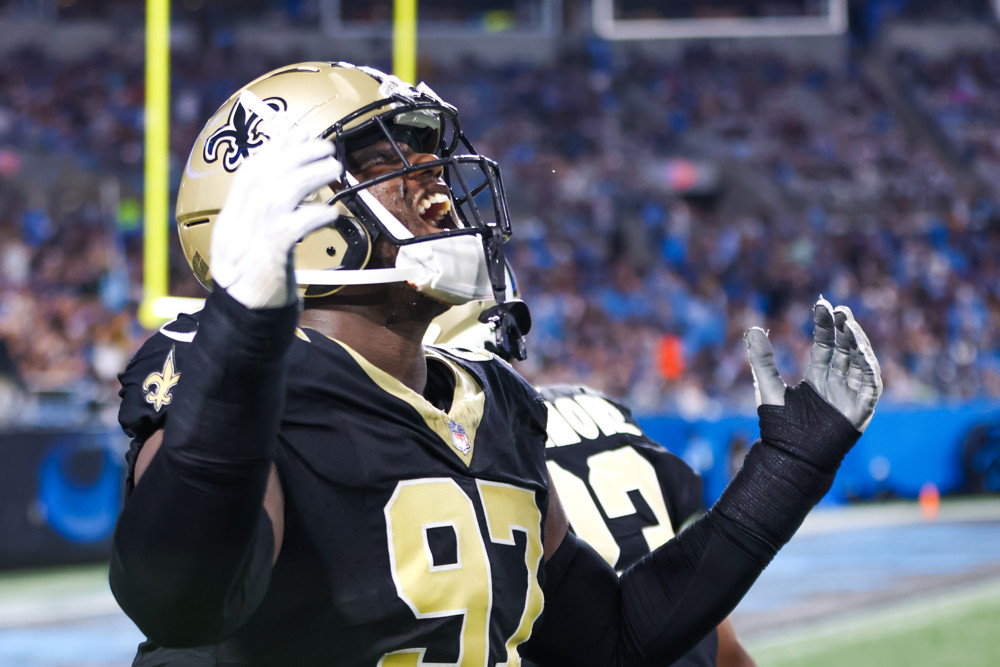
Contract Details: Two years, $7 million ($3.5 million in AAV), with $3 million guaranteed.
The worst unit on the Denver Broncos last season — and frankly, one of the worst position groups any team had across the entire league — was the defensive front.
They were in such dire need for defensive line help that they were forced to play longtime practice-squad lineman Jonathan Harris nearly as many snaps as the Eagles played defensive line wunderkind Jalen Carter.
As a result, outside of Zach Allen, there’s no one you can feel great about on the Denver Broncos’ defensive line. Even DJ Jones took a considerable step back last season. That unit is also losing Mike Purcell, it seems, who is coming off one of the best seasons of his career.
Denver’s defensive line struggles were especially noticeable against the run last season, allowing the sixth-highest rate of successful runs and the third-most rushing yards per game in the league. Adding Roach, who led the NFL in run-stop rate (17.4%), according to Pro Football Focus, should go a long way towards remedying that problem.
Malcolm Roach is a Denver Bronco 😈 pic.twitter.com/rMxkJVnVlE
— Michael 🇲🇽 (@RespectMyCos) March 12, 2024
That said, Broncos Country should not look to Roach to improve the team’s pass rush. Among the 140 defensive linemen with at least 100 pass rushing snaps, Roach ranked 121st in pass rush productivity and 117th in pass rush win rate.
Fortunately, the contract appears palatable.
It’s effectively a one-year, $3 million deal, with a team option for a second season at $4 million. That slots in favorably below Andrew Billings and Michael Pierce — defensive tackles signed to occupy a similar role for their teams.
Plus, Roach is considerably younger than both Billings and Pierce, and likely has more untapped potential as a result. The thought of him outperforming that contract is very reasonable, and, if he doesn’t, they can easily move on before the 2025 season and free up cap space while doing so.
Grade: B-
Cody Barton, LB, 27 years old
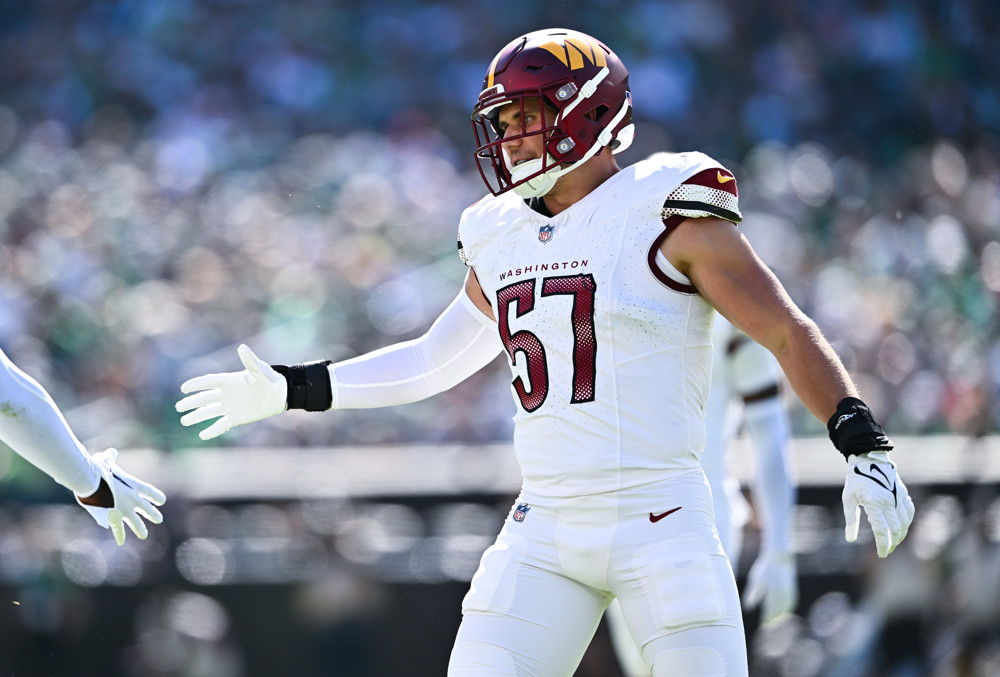
Contract Details: One year, $2.5 million, $1.3 million guaranteed
NOTE: This section was originally written before the specific contract details were announced. With them being announced, this deal only looks better, as it is even more of a bargain.
This grade will be updated if anything notable comes out with the reveal of the official contract details, but this seems like a straightforward, low-risk signing with the potential for high rewards — exactly what the Denver Broncos should be looking for on the veteran market.
As was the case with Roach and Jones, Barton also fills a clear need for Denver.
Josey Jewell left for Carolina on a big-money deal, while the Broncos’ last big investment in the position, third-round pick Drew Sanders, is questionably being moved to EDGE full time.
That left them with just Alex Singleton, off a disappointing season, and Jonas Griffith, off a season-ending injury, as their lone linebackers. Even worse, the skill sets of those two are fairly redundant, as downhill run-stuffers. Neither is a difference-maker in coverage.
That’s where Barton comes in.
The stats aren’t overly impressive, but Barton regularly carries opposing receivers downfield to prevent the opposing offense from creating easy explosives.
Good rep by Barton turning, finding the crosser and getting the depth to get underneath it. pic.twitter.com/SsAisysHKa
— Robby (@Robby_NFL) March 17, 2024
That said, there’s a reason Barton was available for a mere $4 million.
In 2023, Barton was PFF’s sixth-lowest graded run defender at the linebacker position with at least 100 snaps against the run. His run-stop rate of 5.2% ranked 10th-worst among that same group.
It should also be noted that Commanders fans openly celebrated his departure on Twitter.
But the Denver Broncos aren’t finding a superstar linebacker for a bargain bin deal.
Once again, their cap situation for 2024 is tight, so they have to be clever with their additions.
That said, unless the reported $4 million number was incredibly generous, this does feel like an overpay. Giving a linebacker a one-year deal worth $4 million instead of $2.5 million won’t sink a franchise, but it is slightly startling to see Barton making more in AAV than Akeem Davis-Gaither or Denzel Perryman, even if no one is losing sleep over it.
Ultimately, Barton is another low-risk add who fills a clear role on defense and answers a very obvious need. If it wasn’t for the nerves brought on by the headaches he caused his previous fanbases, and the contract was a little cheaper, this might have earned an “A”.
Grade: B
Matt Peart, OT, 26 years old
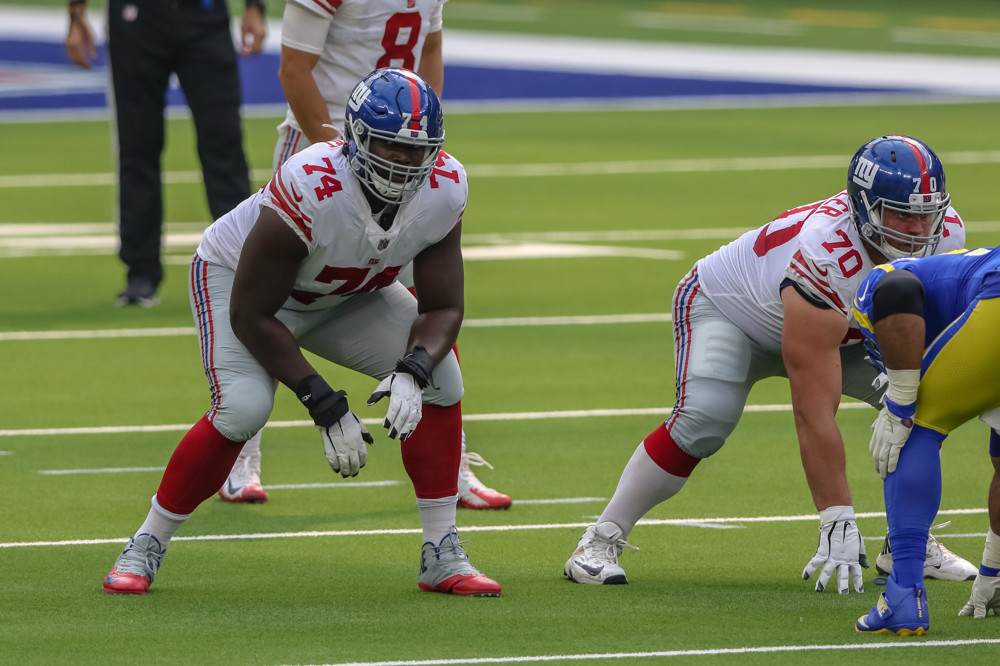
Contract Details: One year, $1.1 million, and $200k guaranteed
The Matt Peart signing checks almost all of the same boxes as the Denver Broncos’ other free agency contracts from this cycle, but there are a few issues that weigh it down.
For the positives, Peart is young, cheap, and possesses some level of upside given his athleticism.
With pick 99 in the 2020 NFL Draft, the #Giants selected Matthew Peart, OT, Connecticut.
— Kent Lee Platte (@MathBomb) April 25, 2020
He posted an elite #RAS with good size, great speed, great explosiveness, poor agility at the OT position.https://t.co/sHtU6hTmky#GiantsPride pic.twitter.com/lTMdZHrsJh
That said, there’s a reason he’s available immediately off his rookie contract for a one-year deal worth an amount near the vet minimum. He has struggled mightily in New York.
Last year, he was Pro Football Focus’ 77th-highest graded tackle in pass protection, among 103 qualifying tackles, landing him in the 25th percentile as a pass blocker (min. 90 pass blocking snaps). That said, his ranking of 45th in pass blocking efficiency (a PFF metric that looks at the rate a lineman allows pressures, hits, and sacks, with sacks being weighted) is a little more palatable.
The troubling fact is, he’s more pass-protector than road-grader.
Peart was PFF’s lowest-graded run blocking tackle with at least 40 run blocking snaps last season, ranking 109th out of 110 qualifying tackles on zone-scheme runs, and 102nd on gap-scheme runs.
If anyone can turn Peart around, is might be the Denver Broncos’ new offensive line mastermind — Zach Strief — but even if he manages that, Peart could easily leave next season for a better deal, mitigating the potential upside.
Fans are right to be a little queasy if this is their lone plan for tackle depth behind Garett Bolles and Mike McGlinchey. Paired with a mid-round developmental option, it’s a much more palatable signing.
Grade: C
Josh Reynolds, WR, 29 years old
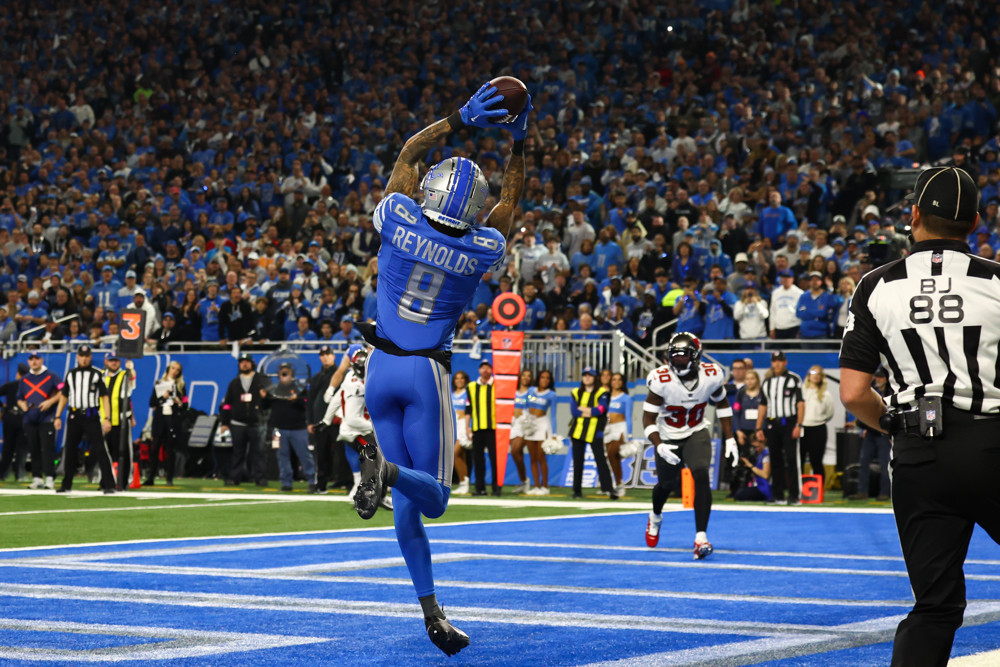
Contract Details: Two years, $9 million ($4.5 million in AAV), and $4.2M guaranteed
The Peart signing dinged the Payton-Paton GPA, but the Josh Reynolds signing polishes it right up — much like that easy elective you take from the stoner teacher to make those college applications shine.
Most fans will know Reynolds from his NFC Championship meltdown, where he had two catastrophic drops on a mere four targets, and, understandably, might be hesitant to welcome the addition with open arms.
ANOTHER CRAIG REYNOLDS DROP pic.twitter.com/qC2L1hWymt
— GC (@ValverdeSZN) January 29, 2024
That hesitation is natural, but Reynolds is a good addition for where the Broncos are in their rebuild.
For starters, the drop problem isn’t a consistent one. Reynolds had just two drops all season in 2019, 2021 and 2022, and had just three in 2020. He also had just three in 2023, up until that last game.
His flaw in that game — flaming out under the bright lights — is absolutely still a concern, but Denver is likely years away from appearing in a conference championship game, and Reynolds is only guaranteed a roster spot for 2024.
Beyond that one ugly performance, Reynolds has a lot to like.
Josh Reynolds appreciation thread! I just want to highlight how great he was this year. #OnePride #AllGrit pic.twitter.com/lsgvUjnNoA
— Presdent of the LaPorta Supportas (@bradholmes4prez) February 3, 2024
He’s a strong separator, ranking third in the entire NFL in route win rate vs. man coverage last season. He’s also a tremendous blocker from the receiver position, something that’s especially valuable to a Broncos attack seemingly building its identity around the ground attack.
Newest Broncos WR Josh Reynolds' blocking highlights from the 2023 season. (AKA the good stuff for all you sickos like me) pic.twitter.com/dFErIgDxo6
— Frankie Abbott (@FrankiesFilm) March 28, 2024
Plus, considering the philosophical overlap between Ben Johnson’s Lions offense and what Payton runs, Reynolds is a proven natural fit in the scheme. That has real value for a developing quarterback, something the Denver Broncos will be living through this season, either with Stidham or a rookie.
Jordan Love had legitimate struggles through the first half of the the 2023 season, and the lack of experienced pass-catchers — and the mistakes that come with that lack of experience — were one of the major contributing factors.
Reynolds and Courtland Sutton provide a baseline of competency and understanding at the position that will support the new QB.
As for the financials, this deal is a steal.
Contract details for new #Broncos WR Josh Reynolds via Over The Cap. pic.twitter.com/YGCECAAzze
— Ryan McFadden (@ryanmcfadden_) March 30, 2024
With an AAV of $4.5 million, Reynolds’ contract slots right below the oft-injured Parris Campbell, and right above return specialist Devin Duvernay, with Duvernay being the most comparable overall example considering length and guarantees.
That said, while Duvernay’s deal is $250 thousand cheaper per season on paper, in reality, it’s likely the more expensive deal, as he is receiving $1.2 million in guarantees.
If the Reynolds deal doesn’t workout, Denver can easily cut him next year and free up some dough. Jacksonville has much less flexibility with a much lesser player, signed in the same cycle.
Duvernay is coming off a 2023 season where, with the league MVP at quarterback, he was targeted a measly eight times across 13 games, and ultimately hauled in four receptions for 18 yards.
Meanwhile, Reynolds played 70 percent of offensive snaps on one of the leagues top offenses, reeling in 40 catches for over 600 yards and scoring five touchdowns, meaning he had more scores than Duvernay had catches.
B-A-R-G-A-I-N
Grade: A–
Sam Mustipher, C, 27 years old
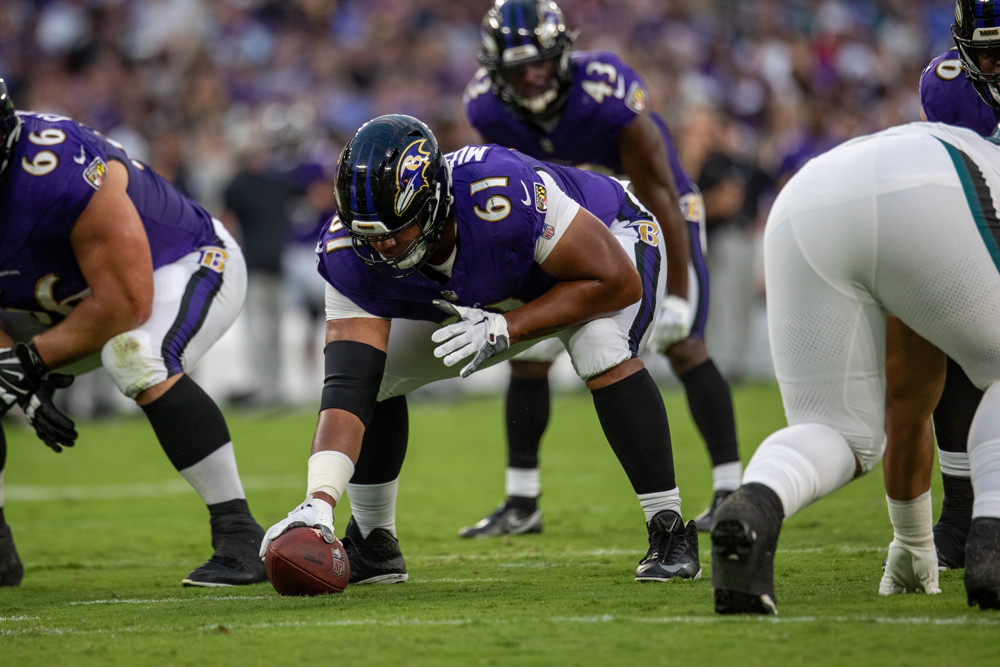
Contract Details: One year. Money TBA
With Lloyd Cushenberry III departing, the Denver Broncos have to find a replacement for 2024.
It seems like their ideal choice for that job is last year’s seventh-round selection, Alex Forsyth, as he was the team’s lone true center on the roster until Thursday’s signing. Nonetheless, that’s a wild amount of faith to put in a seventh-round second-year player that has never even played a snap before.
Sam Mustipher serves as a low-cost insurance plan, just in case Forsyth isn’t ready for NFL competition.
In contrast to Cushenberry, Mustipher thrives on gap-scheme runs, making him a better fit for Sean Payton’s offense, plus, it appears the Broncos acquired this insurance plan for around $1 million with near-zero guarantees.
There are legit holes in his game, as he’s a plodding lineman and is fairly underwhelming in pass protection, but you get what you pay for.
The lack of guaranteed money also means that, if a center they really love falls to them at some point in the draft, they don’t have to have any hesitations about drafting him, as Mustipher should be a pain-free summer cut.
It’s a cheap safety net for a position that needed one, with no real negative impact. Good stuff.
Grade: B+
